Easy kutsinta recipe made without lye water. Soft, silky-smooth, and not too sweet. Perfect as a midday snack and breakfast or enjoy it as a dessert for parties and potluck gatherings.
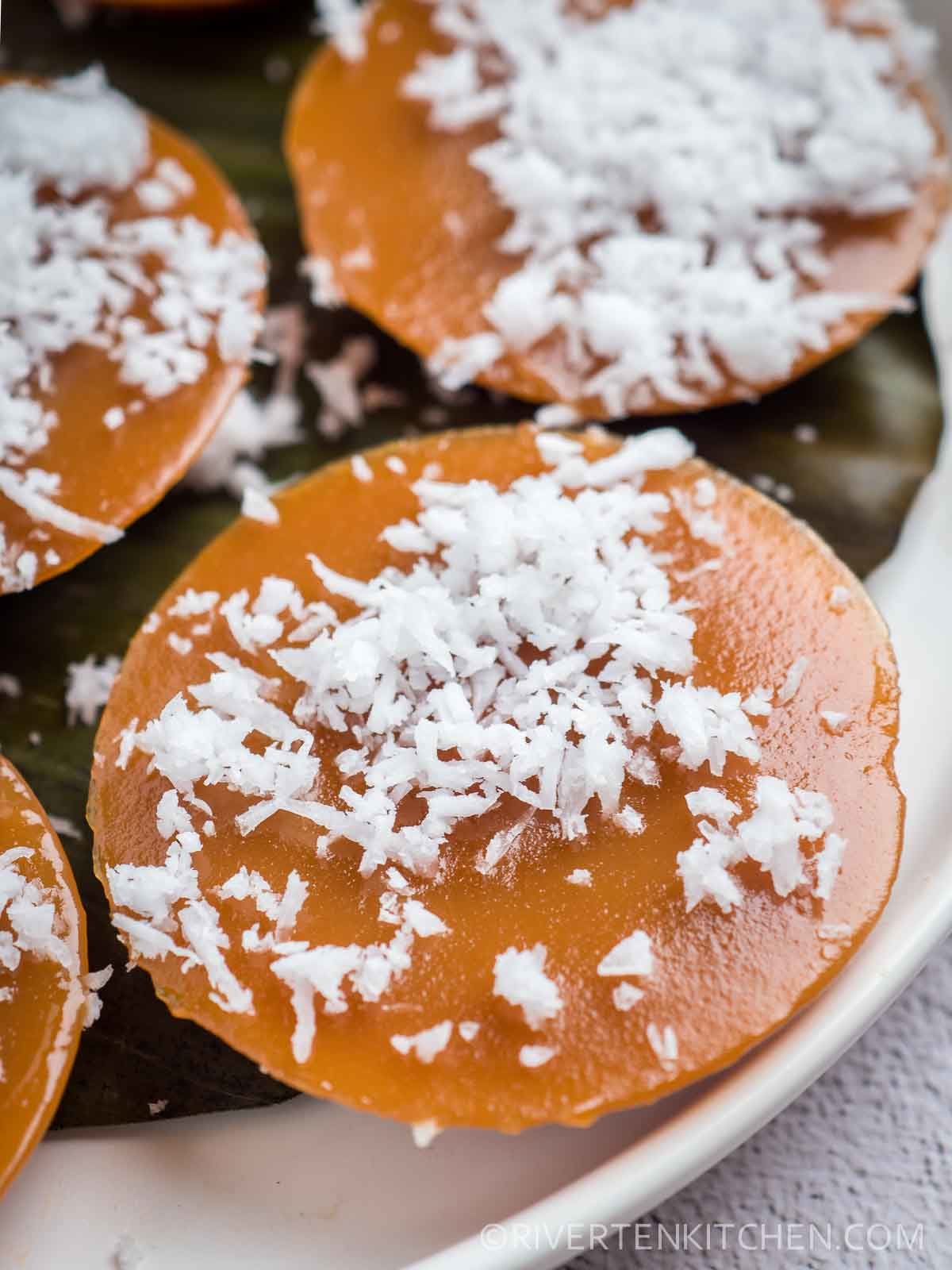
What is Kutsinta and what does it taste like?
Kutsinta is a type of Filipino steamed cake known for its sticky, soft gelatinous texture. It’s sweet with a hint of smoky molasses flavor from the brown sugar.
Traditionally kutsinta is made with some form of flour (usually rice flour) and lye water which is an ingredient that gives it its chewy, gelatinous texture.
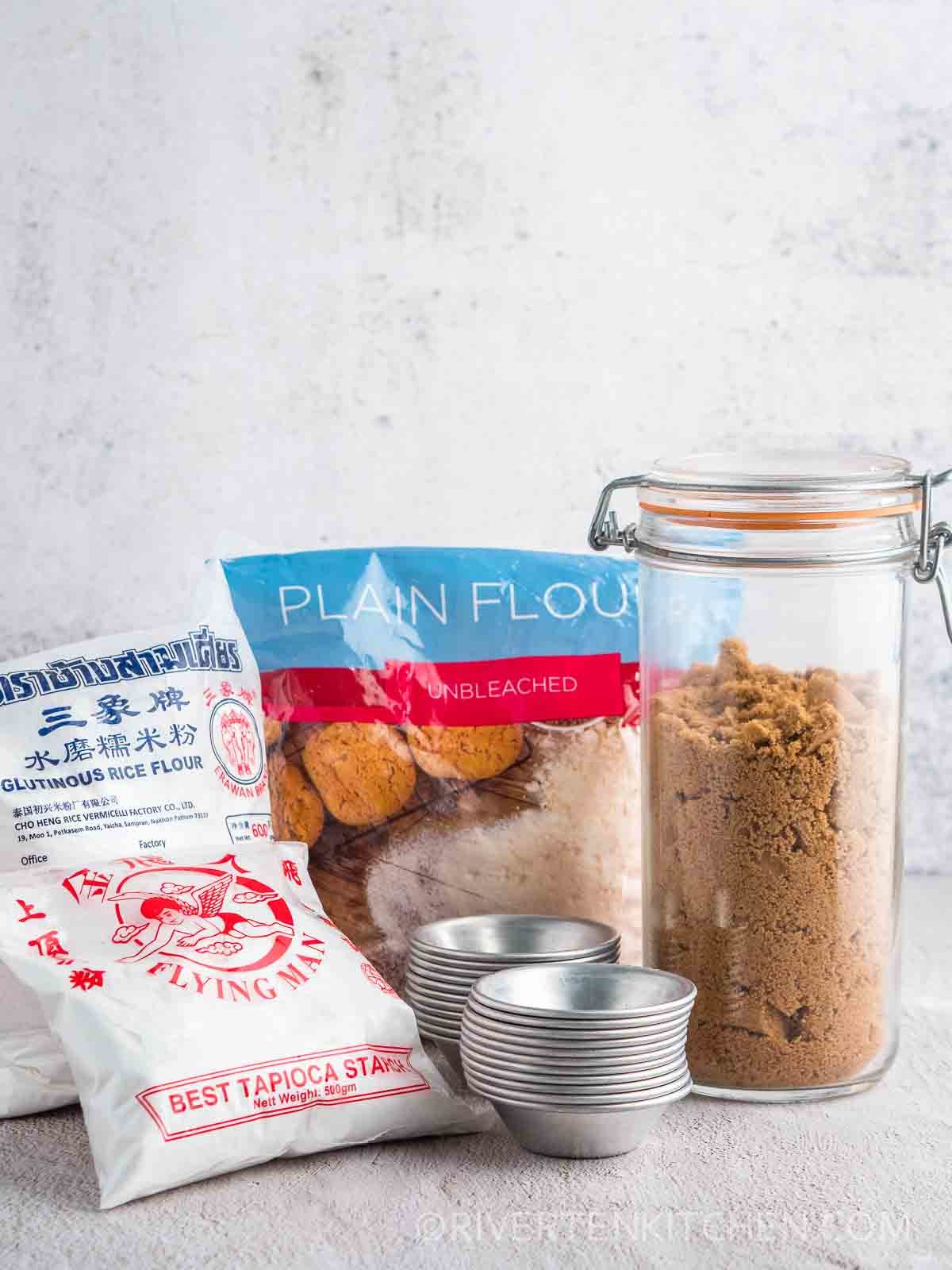
Kutsinta Ingredients
These are the ingredients you need to make kutsinta. And no, you won’t need lye.
- All-purpose flour – gives structure to the cake.
- Tapioca starch/flour – This serves as a thickener and works well with the glutinous rice flour to achieve the sticky texture of the kutsinta.
- Glutinous rice flour – the main ingredient that gives the chewy and gelatinous texture of kutsinta.
- Brown sugar – the base flavor and main sweetener of the cake.
- Water – follow the amount as stated in the recipe. Using less or more can affect the texture of the cake.
- Annatto – gives kutsinta its orange-ish color. You can skip this if not available.
Tried and tested this side by side by making the cake with and without lye and the difference in texture is hardly noticeable.
So, if you’re craving kutsinta but can’t make it because you don’t have lye water or just don’t like using it (for whatever reason), then this recipe is for you!
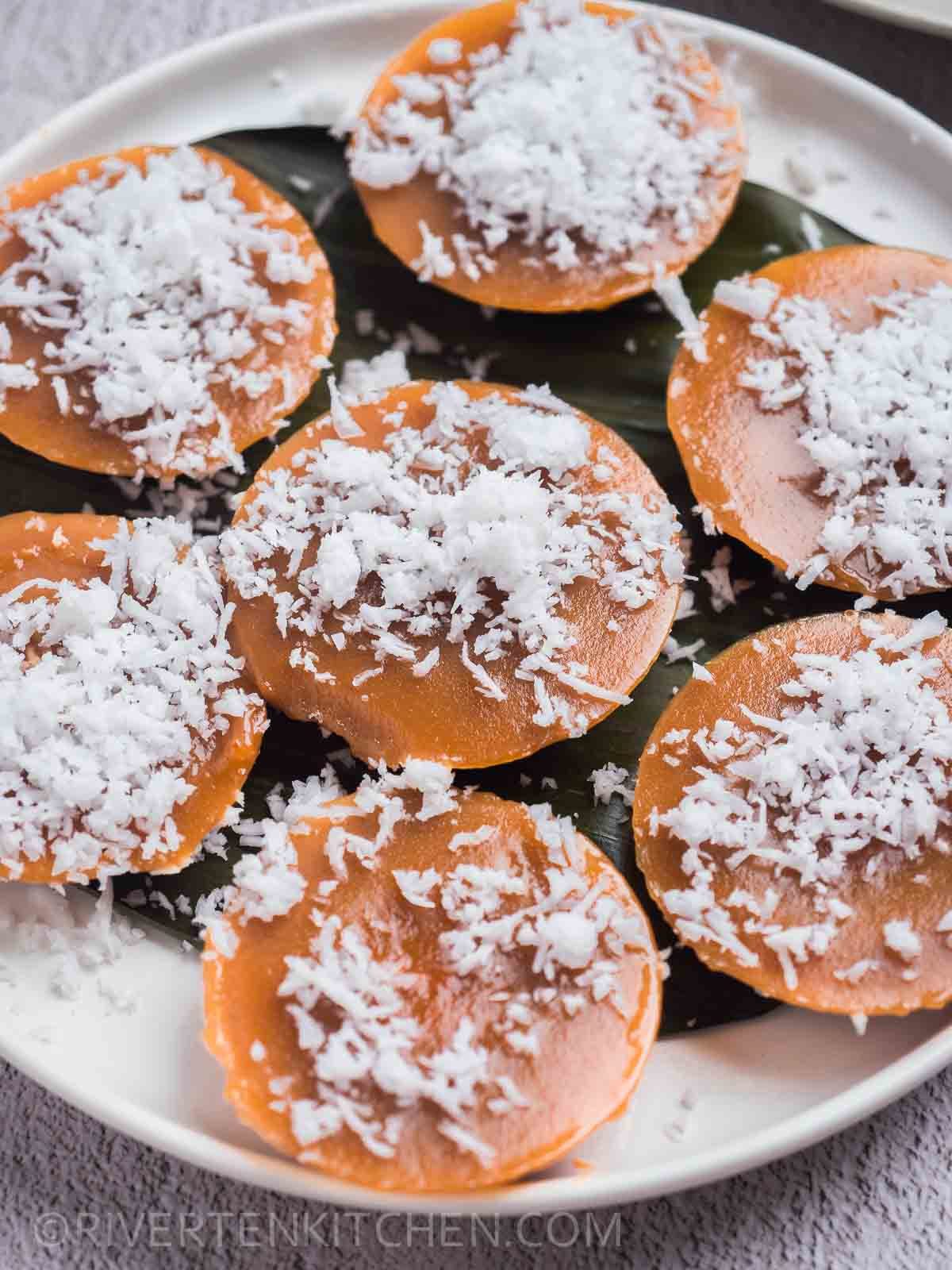
Tapioca Starch/Flour: Things to know
Tapioca starch or flour is made from crushed cassava root pulp and is a key ingredient in this recipe. Do not confuse it with cassava flour which is made of whole cassava root.
For more information about tapioca starch, visit this site (not sponsored)
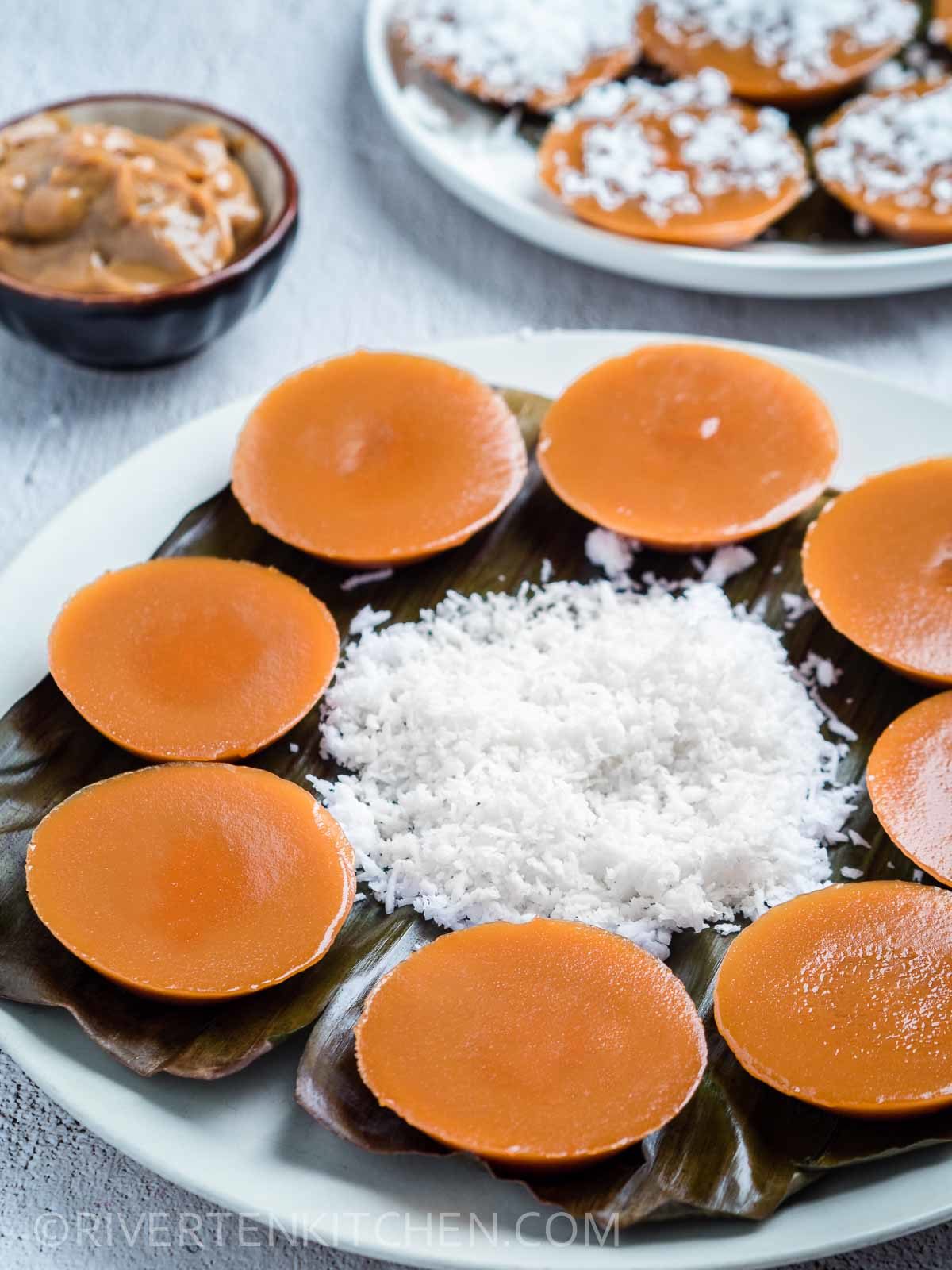
How to make smooth and silky Kutsinta
Didn’t I say this recipe is so easy to make? Simple ingredients, incredible texture with just the right balance of sweetness.
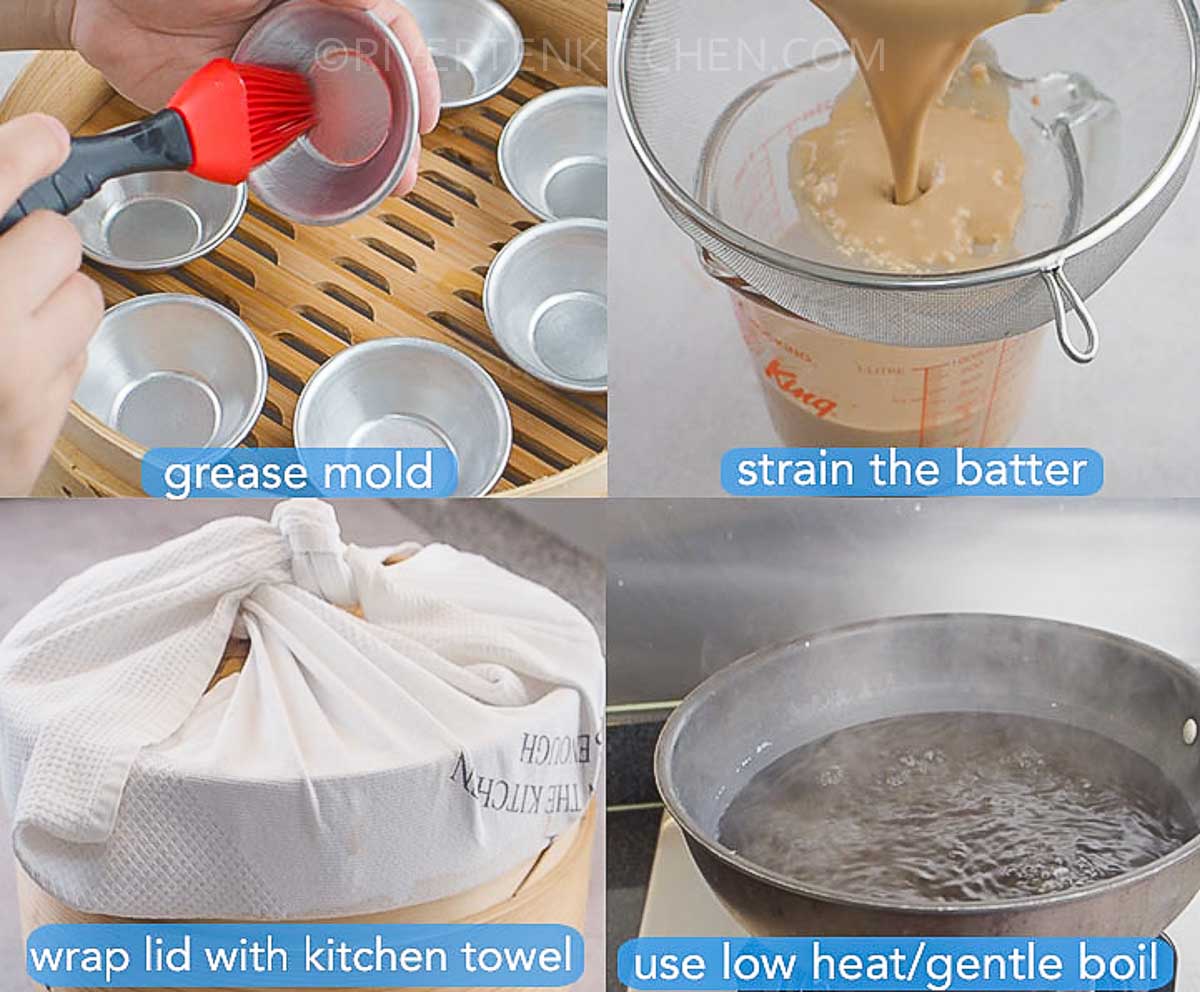
Here are a few tips that will help you make silky and smooth kutsinta.
- For a smoother workflow, prepare the steamer and grease the molds before making the batter.
- Use lukewarm water (maligamgam in Filipino) to help properly dissolve the sugar and flour.
- To remove lumps, strain the batter through a fine-mesh sieve.
- To prevent the flour from sinking, stir it well before filling the molds. Steam it right away and don’t let it sit on the counter for too long.
- To achieve a silky smooth top, use a gentle boil/simmer. Steaming in continuous high heat causes the kutsinta to wrinkle at the top.
- To minimize the dimple/dent at the top of the cake, wrap the lid with a damp kitchen towel. This will prevent the water from dripping into the cake.
How to Serve
Sprinkle freshly grated coconut on top or spread some dulce de leche if you feel like indulging. So, so good!
Much like puto, kutsinta is enjoyed by many Filipinos as a snack and breakfast. Serve as a dessert for special occasions like birthdays, Christmas and New Year.
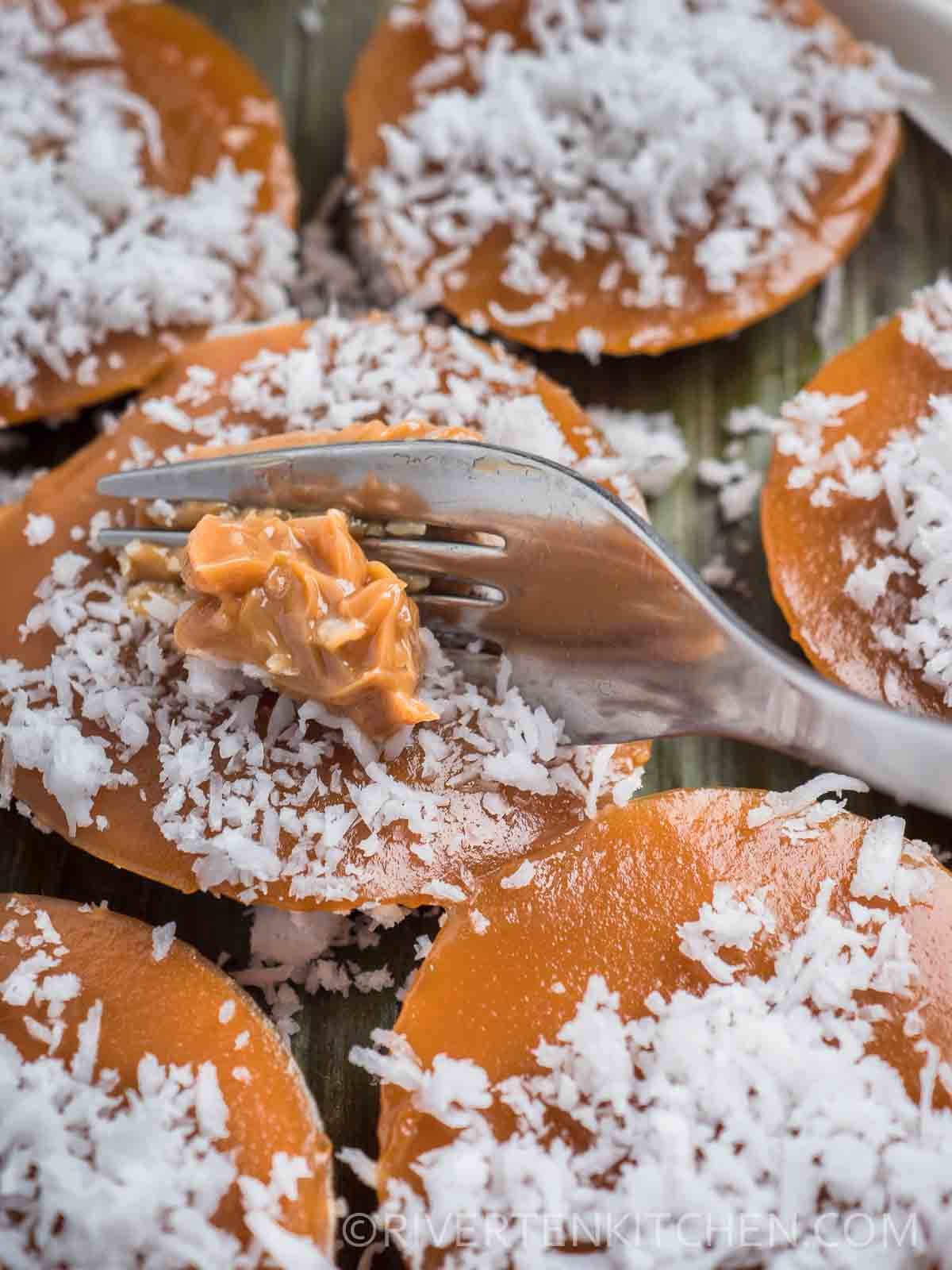
What to Serve with Kutsinta
Kutsinta is best paired with these savory Filipino dishes:
Frequently asked questions about kutsinta
This recipe has not been tested yet with cassava flour, so wouldn’t recommend doing any substitutions for now.
You can find tapioca flour in many Asian grocery stores, health stores, and online shops such as Amazon.
Annatto powder is only used in kutsinta as a food color. Omitting it will just make the cake light brown in color instead of orange.
Two common causes of this are using continuous high heat during steaming and water getting into the cake. For a smooth and silky texture, use the lowest heat for gentle steaming. To prevent the water from dripping into the cake, wrap the lid with a damp kitchen towel.
Small egg tart molds without flute are what I would recommend for making kutsinta. You can usually find this online (see the link in the recipe card) and in the baking tools shop.
Tip: Don’t put the molds in the dishwasher as it will cause corrosion. Just wash it with cold water and regular dishwashing soap.
Kutsinta Recipe Video
Try these dessert recipes next
- Coconut Mochi Donut Balls (Carioca/Cascaron)
- Special Palitaw
- Bibingka Malagkit
- Maja Blanca
- Leche Flan
- Tres Leches
- Filipino Fruit Salad
- Ginataang Bilo-Bilo
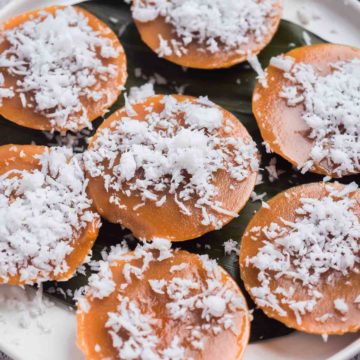
Kutsinta (No Lye Water)
Ingredients
Wet Ingredients
- 1 cup brown sugar (packed, see note 1)
- 3 cups lukewarm water (divided)
- ¼ tsp salt
- 1 tsp annatto powder (optional, see note 2)
Dry Ingredients
- 1 cup all-purpose flour
- 1 cup tapioca starch/flour (see note 3)
- ½ cup glutinous rice flour
Instructions
Prepare the tools
- Lightly grease the molds with vegetable oil. Place in the steamer racks and set aside. TIGHTLY wrap the steamer lid with a damp kitchen towel. Next, prepare the steamer by adding water into the base. Heat until it starts boiling. Meanwhile, make the batter.
Make the batter
- Combine 2 1/2 cup water, brown sugar, and salt in a large mixing bowl. Stir until sugar and salt is completely dissolved.
- In a small bowl, combine annatto powder and 1/2 cup water. Stir until completely dissolved. Pour onto the brown sugar mixture. Stir again to combine.
- Combine all dry ingredients in a large bowl. Whisk until lump-free. Pour the liquid ingredients and stir until combined. Strain the batter through a fine-mesh sieve and into a large measuring cup with a pouring spout.
Steam and Serve (see notes)
- Gently stir the batter then fill each mold 3/4 full (see video). Place the racks in the steamer and cover with the lid.
- Adjust the heat to the lowest heat so the water will gently simmer instead of boiling. Steam for 25 minutes until the top is set.
- Remove from the steamer and let it cool completely. Remove from the molds using a spatula. Serve with grated coconut or dulce de leche. Enjoy!
Recipe Notes & Tips:
Ingredient substitutions
- Sugar – add more based on preference. Start with 1 tbsp, taste then go from there.
- Tapioca starch/flour – this recipe has not been tested yet with cassava flour, so wouldn’t recommend doing any substitutions for now.
- Annatto powder – you can also use 1 tablespoon annatto seeds. Soak in 1/2 cup hot water for 5 to 10 minutes. Drain then discard seeds.
Steaming Tips:
- If cooking in batches, don’t pour the batter into the mold until you’re ready to steam. The flour tends to sink if batter sits for too long. Stir it well before filling the molds and steam right away.
- To achieve a silky smooth top, use a gentle boil/simmer. Steaming in continuous high-heat causes the kutsinta to wrinkle at the top.
- To minimize the dimple/dent at the top of the cake, wrap the lid with a damp kitchen towel. This will prevent the water from dripping into the cake.

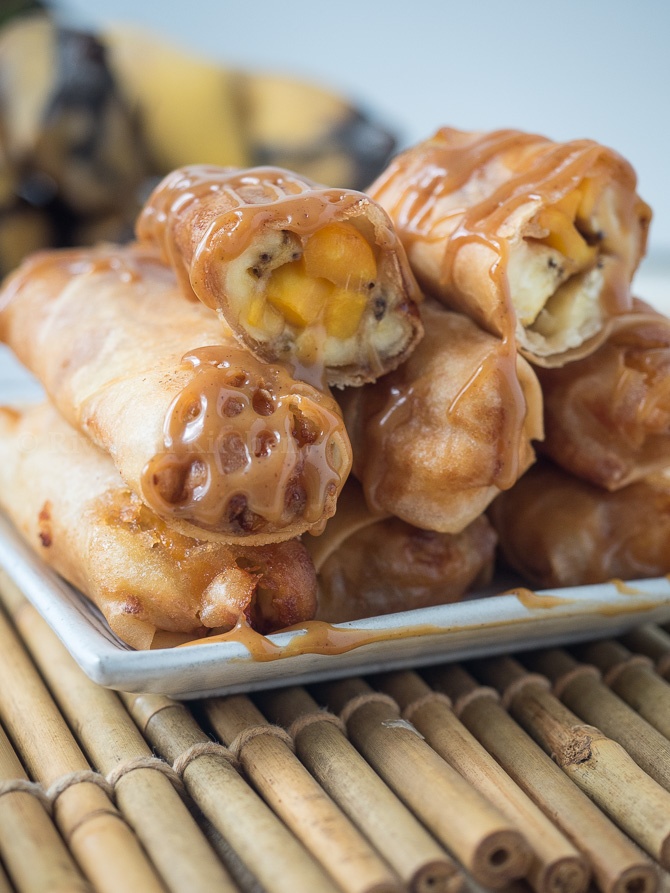
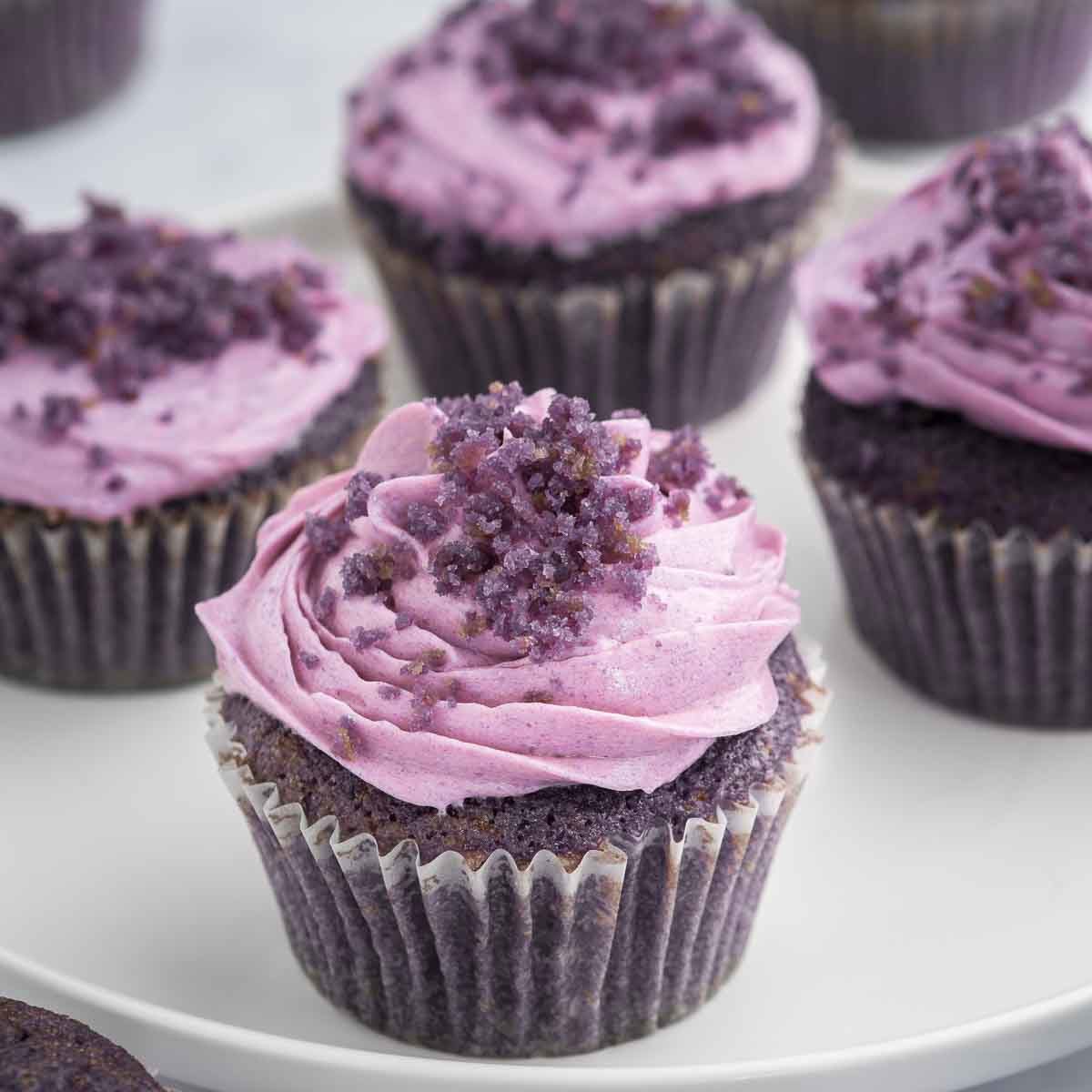
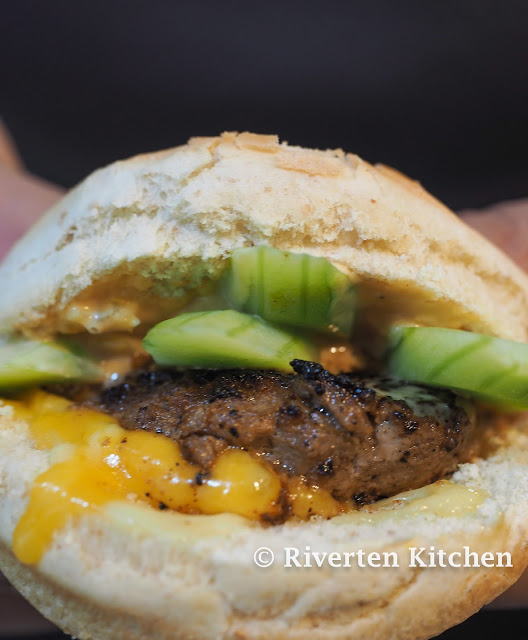
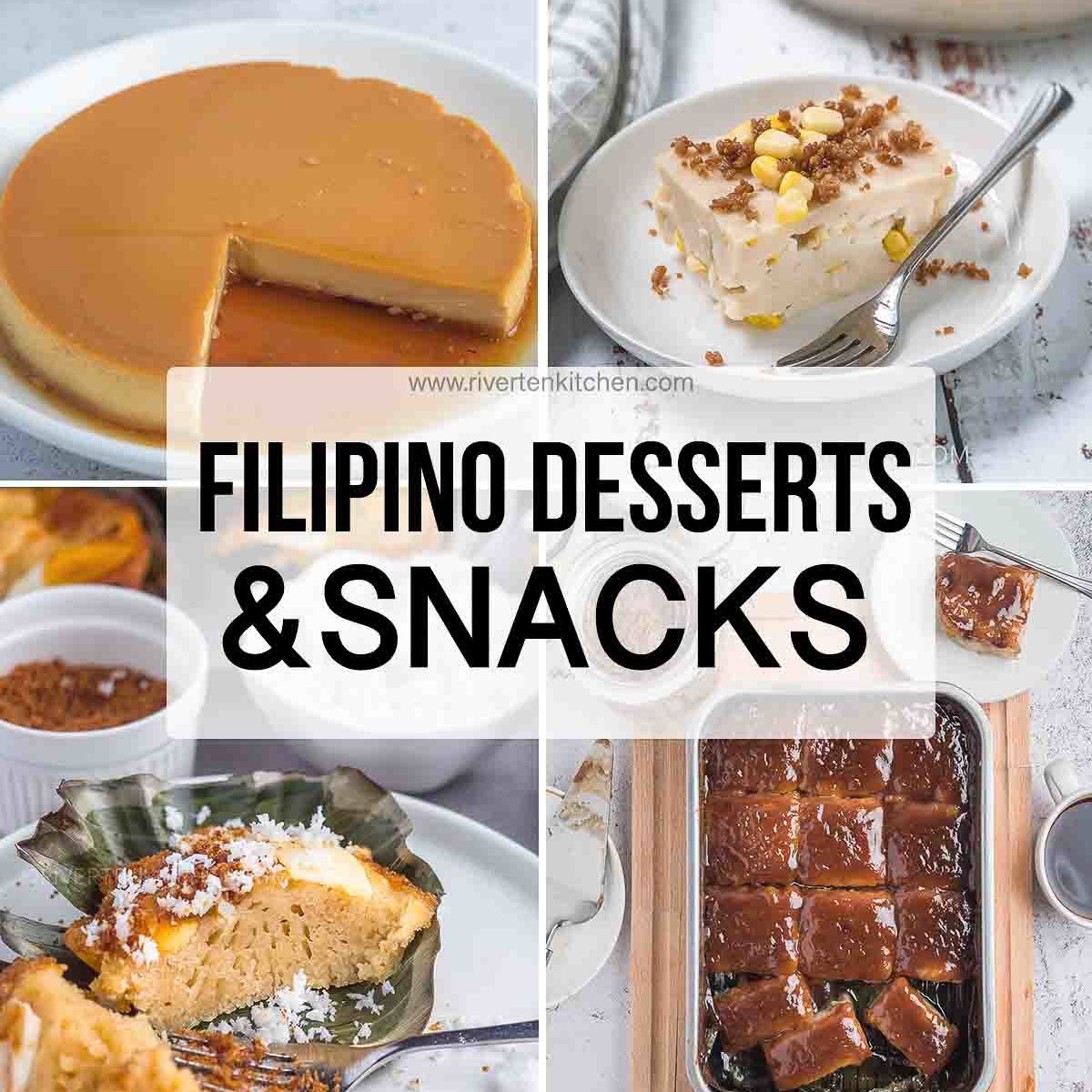
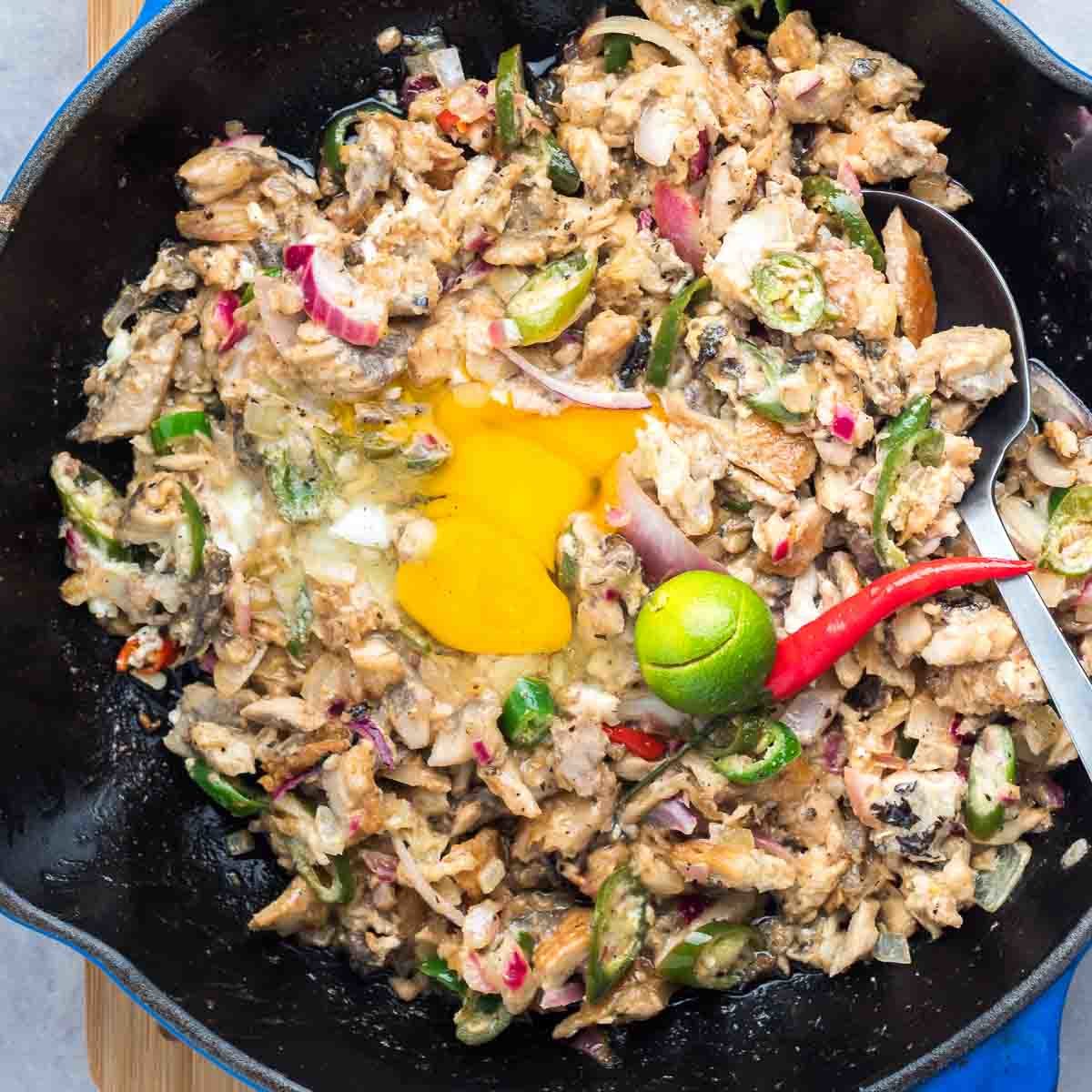
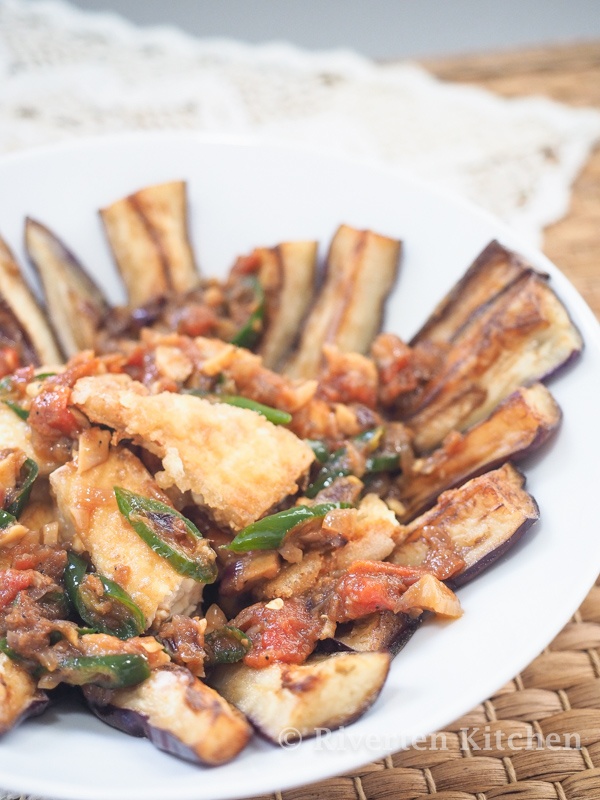
Can we use the food steamer (used for siopao/siomai)…i dont have a bamboo steamer
Any steamer should be fine. Just wrap the lid with a damp kitchen towel to prevent the water from dripping into the cake.
– Mella
Is it ok if I use lye ?
Easy to follow recipe. Love how the texture of mine came out! Will make this again!